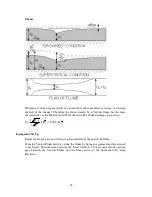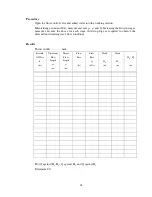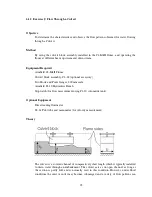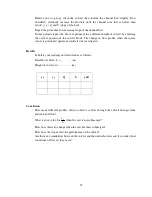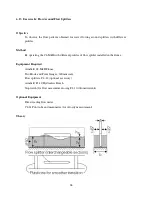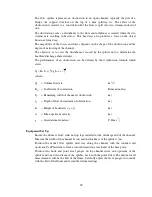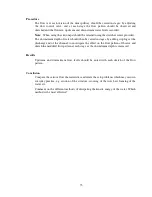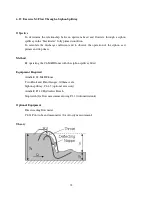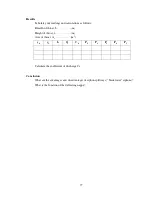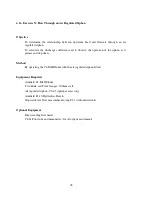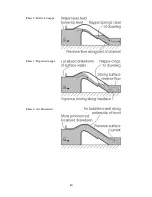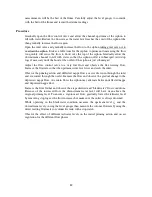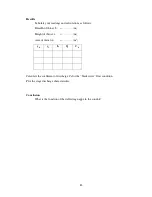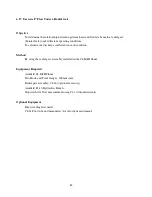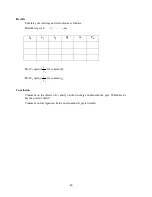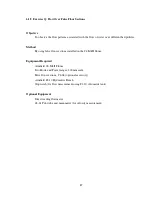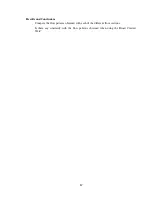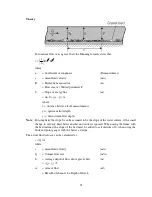
76
Equipment Set Up
Ensure the flume is level, with no stop logs installed at the discharge end of the channel.
Measure and record the dimensions - breadth b (m) and height z (m) of the throat above
the crest inside the siphon.
Place the siphon in the flume with the upper leg facing upstream. Ensure that the siphon
is secured using a mounting hook through the bed of the flume. For accurate results the
gaps between the siphon and the channel should be sealed on the upstream side using
Plasticine. Close the valve on the siphon breaker tube at the top of the hood on the
siphon.
Position two hook and point level gauges on the channel sides, one upstream of the
siphon, the second downstream, each with the point fitted. The datum for all
measurements will be the bed of the flume. Carefully adjust the level gauges to coincide
with the bed of the flume and record the datum readings.
Gradually open the flow control valve and allow the channel upstream of the siphon to
fill with water. Reduce the flowrate as the water level reaches the crest of the siphon tube
then gradually increase the flow again.
Note:
It takes a little time for the siphon to prime and increasing the flow too quickly
will result in water flooding over the top of the siphon and possibly over the sides of the
channel.
Allow the upstream and downstream channels to fill so that both the siphon inlet and
outlet are submerged. If the outlet is not submerged add stop logs at the exit from the
channel until the outlet just remains submerged.
If necessary adjust the flow control valve so that the upstream water level falls slowly
when the siphon has fully primed.
Procedure
Observe the level changes upstream and the operation of the siphon as it primes and de-
primes in a continuous cycle. Observe that the water level falls below the crest and does
not de-prime until the hood is exposed and air enters the barrel.
Position the end of the siphon breaker (breather tube) so that it is just above the level of
the crest then open the valve on the tube. Observe that the siphon action breaks when the
end of the tube is exposed to the air resulting in a much smaller change in the upstream
level.
Close the valve on the siphon breaker. When the siphon is primed increase the flow by
adjusting the flow control valve so that the upstream level remains constant. When
conditions are stable measure the upstream level y
0
and the downstream level y
1
using the
level gauges then measure the volume flowrate Q using the direct reading flowmeter or
volumetric tank with a stopwatch. Measure the pressure at each of the tappings P1 to P5.
With the siphon still fully primed, gradually raise the tailwater level by increasing the
number of stop logs. When each change has stabilised measure y
0
, y
1
, Q and P1 to P5.

